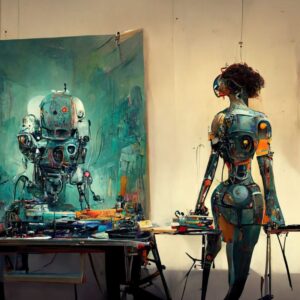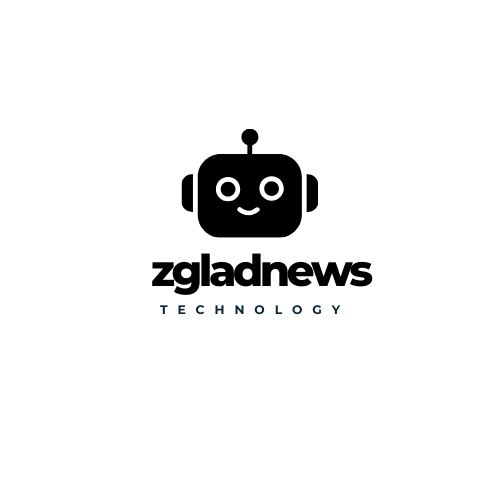Art
AI and Art: When Computers Create Creativity
AI’s entry into the art world has been marked by several groundbreaking developments. Traditionally, art has been a domain of human experience, emotion, and intuition. However, AI has introduced a new way of creating art by leveraging algorithms and vast datasets. This shift began with the advent of machine learning and neural networks, technologies that allow computers to learn from and mimic human behavior.
One of the most notable milestones in AI-generated art was the creation of “Portrait of Edmond de Belamy,” a piece produced by the Paris-based art collective Obvious using a machine learning algorithm known as Generative Adversarial Networks (GANs). This portrait was auctioned at Christie’s for $432,500, signaling a new era where AI-generated art can command significant attention and value.
AI’s approach to art creation is fundamentally different from human methods. Instead of relying on personal experience and emotion, AI art is generated through complex algorithms that analyze existing art data to create new works. GANs, for example, use two neural networks: the generator and the discriminator. The generator creates images based on patterns learned from existing artworks, while the discriminator evaluates these images against a dataset of real art to determine their authenticity.
Through an iterative process, the generator improves its output, producing increasingly sophisticated and convincing artworks. This method allows AI to experiment with various styles and techniques, blending elements from different artistic traditions to create unique and original pieces.
Additionally, style transfer techniques enable AI to apply the aesthetic characteristics of one image to another, effectively merging different artistic styles. This approach has led to the creation of artworks that combine elements from classical and contemporary art, offering new visual experiences that push the boundaries of traditional art forms.

The rise of AI in art has significant implications for the art world and beyond. One of the most pressing questions is the nature of creativity itself. Traditionally, creativity has been viewed as a uniquely human trait, rooted in personal experience and emotional depth. AI challenges this notion by producing art based on data and algorithms rather than personal expression.
This shift raises important questions about authorship and intellectual property. When an AI creates a piece of art, who holds the copyright? Is it the developer who designed the algorithm, the user who directed the AI, or the AI itself? These questions complicate traditional concepts of authorship and intellectual property, requiring new legal and ethical frameworks to address the complexities of AI-generated art.
Moreover, AI has the potential to democratize art creation. Accessible AI tools allow individuals without formal artistic training to produce impressive and unique artworks. This democratization could lead to a broader range of artistic expression and make art more inclusive, enabling a wider array of voices and perspectives to be represented in the art world.
Despite its potential, AI-generated art has faced significant criticisms. One major critique is that AI lacks genuine creativity and emotional engagement. While AI can produce aesthetically pleasing works, it does so without true understanding or emotional depth. This raises questions about the authenticity and value of AI-generated art compared to works created by human artists.
Another challenge is the risk of perpetuating biases present in the training data. If an AI is trained on data that reflects historical biases or stereotypes, it may reproduce these biases in its output. This can lead to problematic or unoriginal art, reinforcing existing stereotypes rather than challenging them.
Additionally, there is concern about the impact of AI on traditional art forms and the role of human artists. As AI continues to advance, there is a fear that it could undermine the value of human creativity and craftsmanship. This tension between human and machine creativity is an ongoing debate that highlights the need for a nuanced understanding of the role of AI in art.
Looking to the future, the relationship between AI and art is likely to evolve in exciting and unexpected ways. As AI technology continues to advance, it will become an even more integral part of the creative process. Future AI systems may not only generate art but also collaborate with human artists, combining computational power with human intuition and emotion.
AI could also play a transformative role in art education and critique. AI-driven tools could provide real-time feedback to aspiring artists, helping them refine their skills and techniques. In art critique, AI could analyze trends and patterns, offering new insights into artistic movements and preferences. This could enhance our understanding of art and contribute to more informed and nuanced discussions about artistic value and innovation.
Moreover, as AI becomes more sophisticated, it may push the boundaries of what is considered art. The blending of human and machine creativity could lead to entirely new forms of artistic expression, challenging traditional definitions and expanding the horizons of art. This evolution will likely result in a dynamic and diverse art landscape, where new forms and genres emerge, reflecting the complexities of both human and machine creativity.
Learn more: zgladnews


